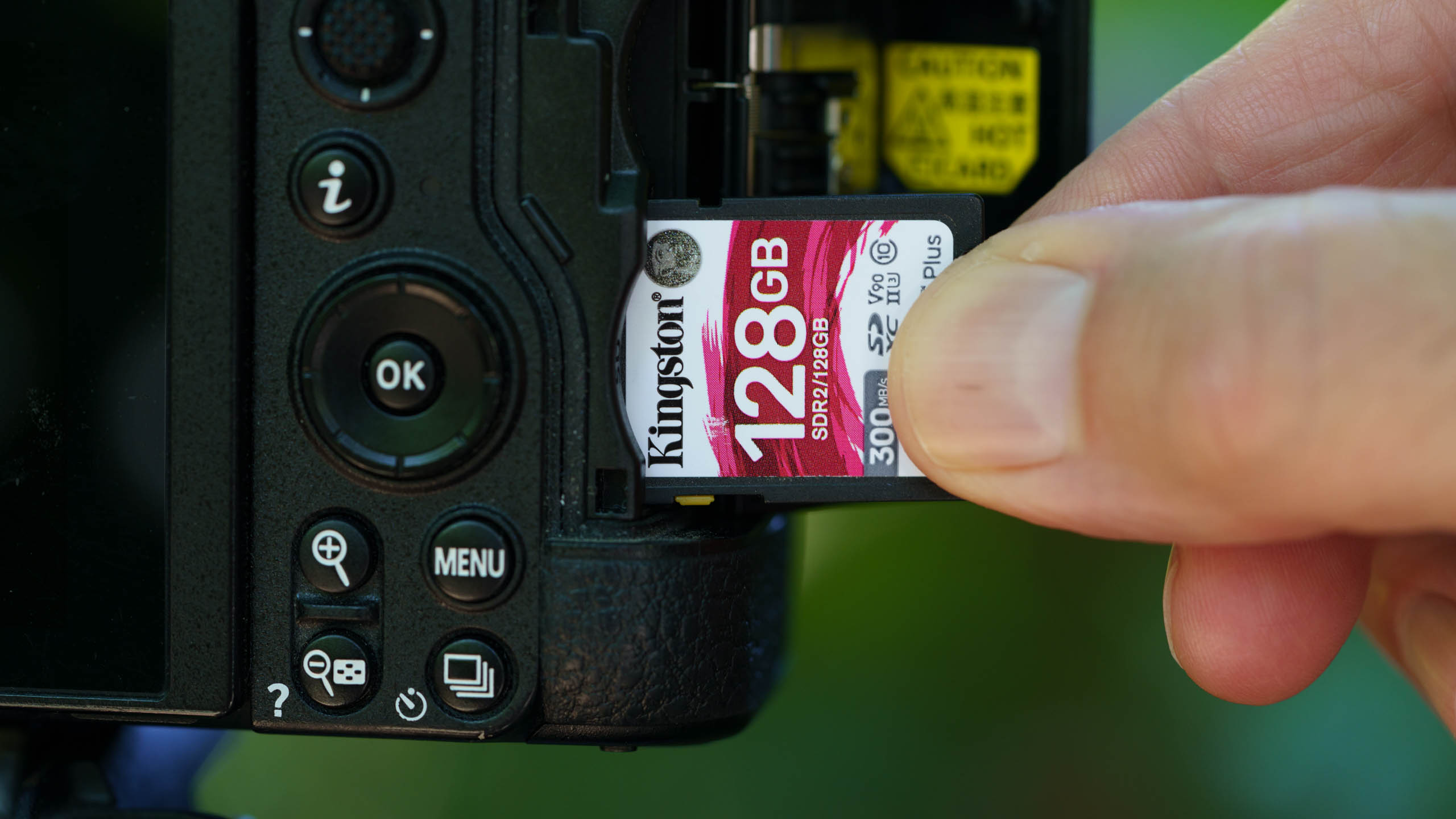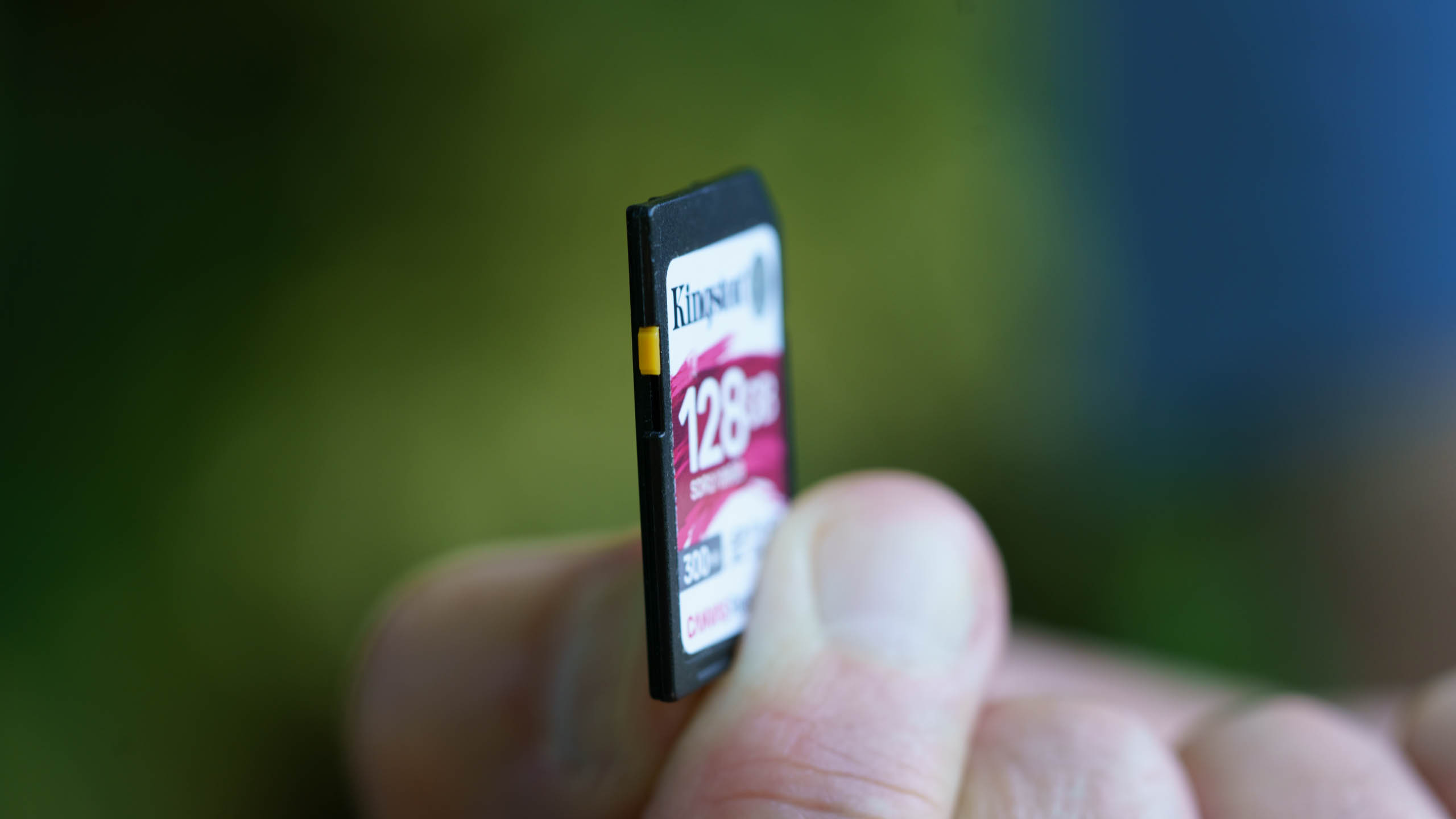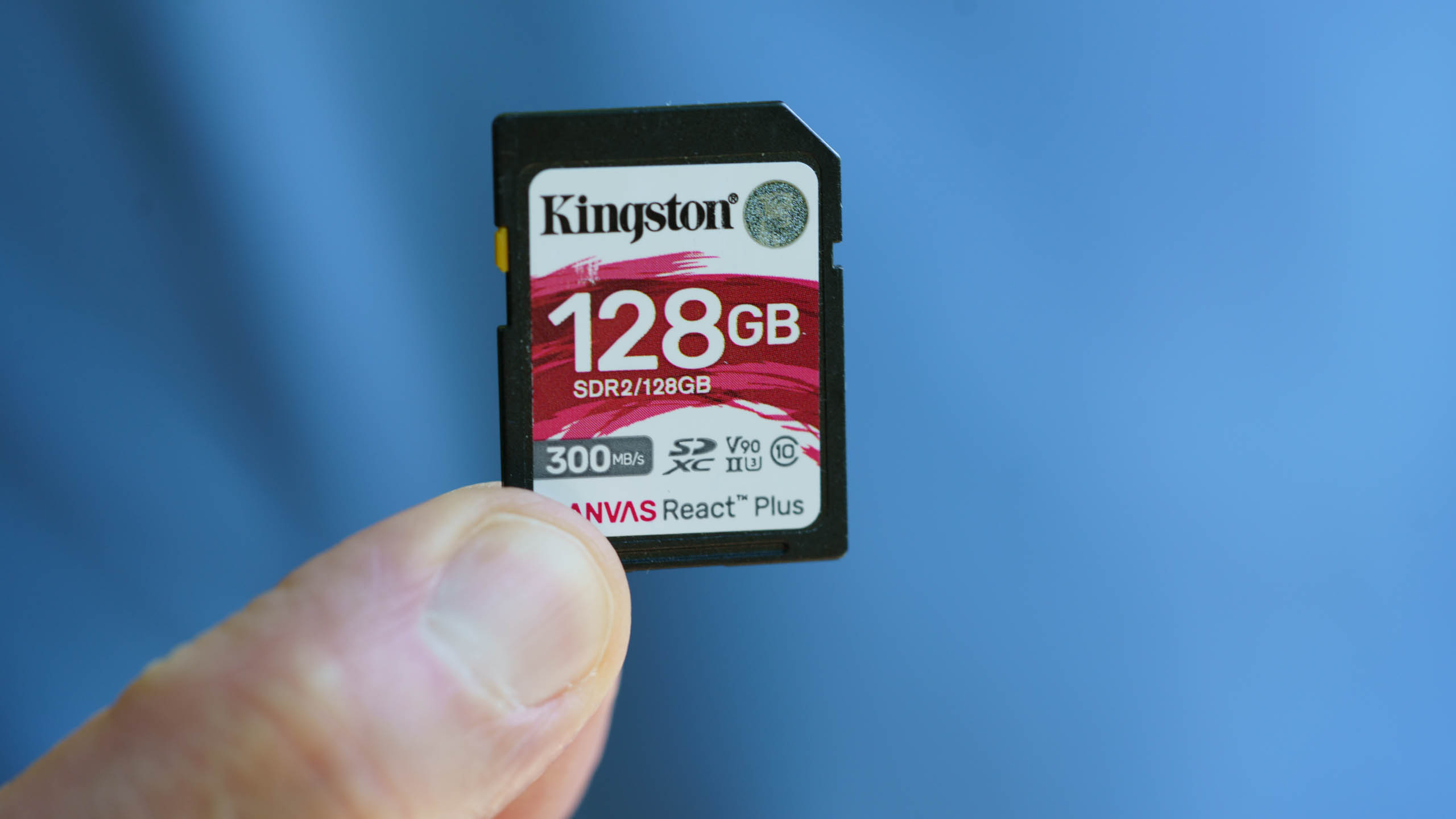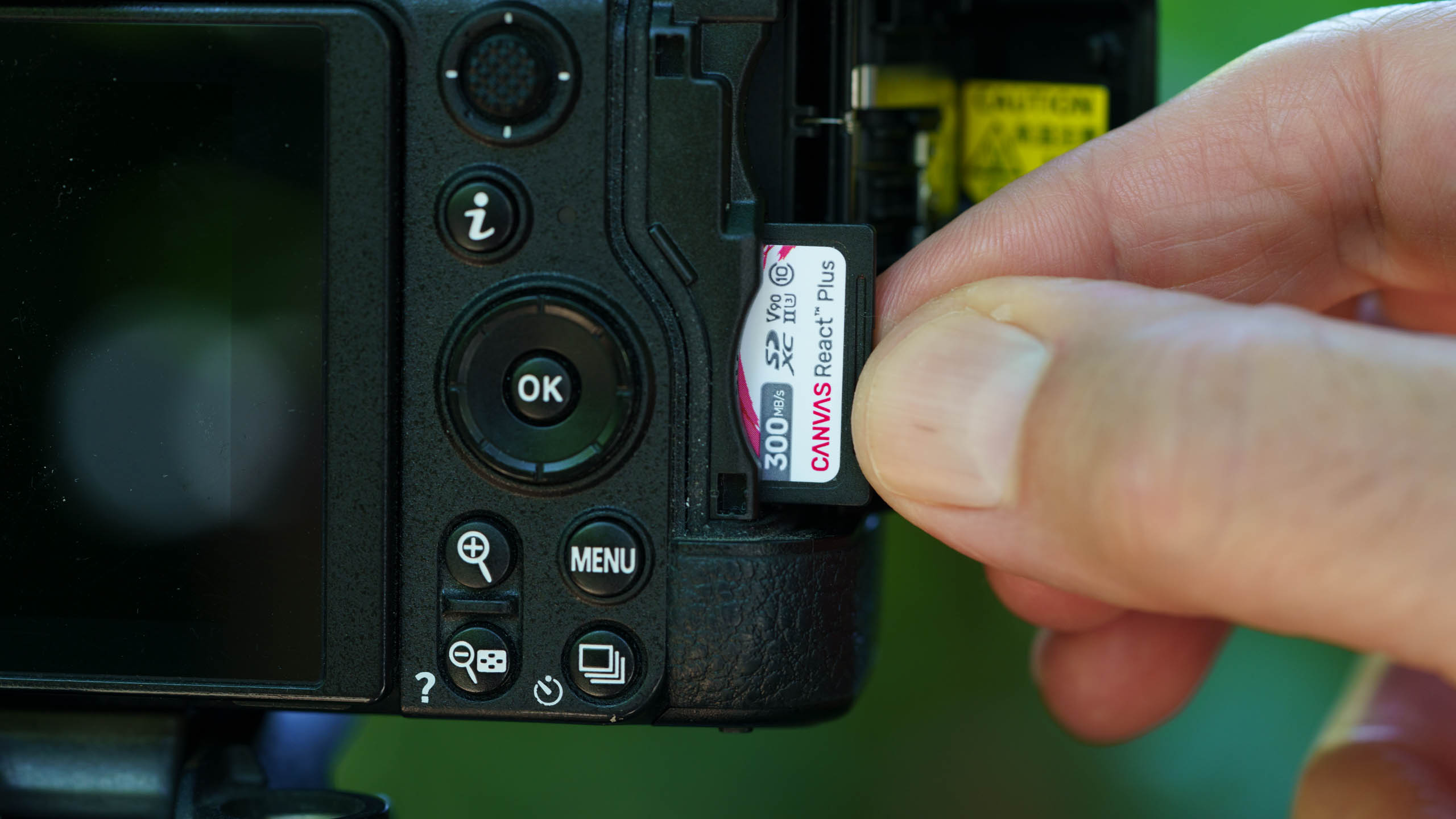Digital Camera World Verdict
Kingston may not be the most widely-recognised memory card brand but the Canvas React Plus SDXC UHS-II card proves itself to be very reliable and a great choice for photographers looking for a more affordable alternative to better-known brands or CFexpress cards. Don’t expect to be able to record 8K raw video though - cameras demand CFexpress speed for that.
Pros
- +
Lower capacities are affordably priced
- +
Good capacity range
- +
Impressive in-camera performance
Cons
- -
Slower than CFexpress
- -
Largest capacity still expensive
- -
Usual plastic construction
Why you can trust Digital Camera World
Kingston Technology offers a fairly limited collection of memory cards with just three SD card series and three microSD series. The Canvas React Plus series is the flagship line of SD cards with capacities of 32GB, 64GB, 128GB and 256GB. The 32GB card is an SDHC card whereas the 64GB and larger cards are SDXC units.
The Canvas React Plus SD cards are UHS-II compliant and have a video speed class of V90, meaning the minimum data transfer rate is 90MB/s. They also have maximum read speeds of 300MB/s and write speeds up to 260MB/s. Consequently, they are capable of recording high-resolution images at fast continuous shooting rates or video at 4K or even 8K resolution.
Specifications

Max read speed: 300MB/s
Max write speed: 260MB/s
Available capacities: 32GB, 64GB, 128GB, 256GB
Build and handling
SD cards have been the dominant memory card format for several years now and consequently, their form is very familiar to most photographers. A little larger and thicker than a standard UK postage stamp, SD cards aren’t as easy to lose as microSD cards but they don’t fee quite as robust as CFexpress cards.

The tell-tale sign that the Kingston Canvas React Plus SD card is UHS-II compliant is that it has two rows off connection points on its rear rather than the single row that’s seen on UHS-I cards.
As usual, there’s a small sliding switch on the left of the card that enables the card to be locked or unlocked. This moves smoothly with appropriate resistance so it isn’t shifted too easily.
I’ve used the 128GB Canvas React Plus card in a wide range of cameras and it always slides in easily. It’s released by pressing down on the top edge so that pops out a little from the camera’s card slot and can be withdrawn.
Performance

After using the 128GB Kingston Canvas React Plus SD card extensively, I can say without reservation that it’s reliable. It has performed flawlessly when I’ve shot on high-resolution cameras like the 45.7MP Nikon Z7 II at its fastest rate (10fps) and when shooting 4K video. It’s also proved capable of recording 8K video, however, it doesn’t allow the most demanding formats like 8K raw.
When the Z 7II was set to shoot uncompressed 14-bit raw files at 10fps, I was able to capture 39 images in a single sequence lasting just under 4 seconds. That’s just 9 images short of what Nikon claims is possible with a good CFexpress card. Switching to capture Fine* quality Jpegs extended the sequence to 96 images, taking around 9 seconds. Meanwhile, shooting Fine quality Jpegs sees 127 images captured in one blast - above the 113 claimed for with a CFexpress card.
In another real-world test, I was able to transfer around 9.7GB of images (100 Fine* Jpegs and 100 14-bit uncompressed raw files) from the Nikon Z 7II in 1 minute 44 seconds.
Blackmagic Design’s Disk Speed Test indicates that the Canvas React Plus SD card has a write speed of around 204MB/s and a read speed of 249MB/s. As usual, those speeds are a little lower than the stated maximums, but they’re very good. The software also indicates that the card can be used to record 8K raw video at up to 24p, but this may be limited by the camera.
Verdict

Kingston isn’t one of the first names that springs to mind when considering buying a memory card and the price of the SDXC UHS-II card reflects that. Nevertheless, the V90 UHS-II SDXC proves to be a reliable card, enabling 4K and 8K video recording as well as delivering impressive stills burst depths with the highest-quality raw files that are only a little behind those claimed with faster and usually more expensive CFexpress cards.
While the 256GB card may be a bit too pricy, for $107.89/£127.19 at the time of writing, the 128GB card is very attractive with enough capacity for the average day’s shoot for all but the most prolific photographers.
Read more
Best memory cards
Best memory card readers
Why do some SD cards have two rows of pins?
Memory card symbols explained
Best CFexpress cards
What is CFexpress Type A?
Best CFast cards
Angela has been testing camera gear from all the major manufacturers since January 2004 and has been Amateur Photographer’s Technical Editor and Head of Testing for Future Publishing’s photography portfolio (Digital Camera Magazine, PhotoPlus: The Canon Magazine, N-Photo, Practical Photoshop, Photography Week and Professional Photography magazines, as well as the Digital Camera World and TechRadar websites). She is the founder of SheClicks - a community group that encourages and supports female photographers.



